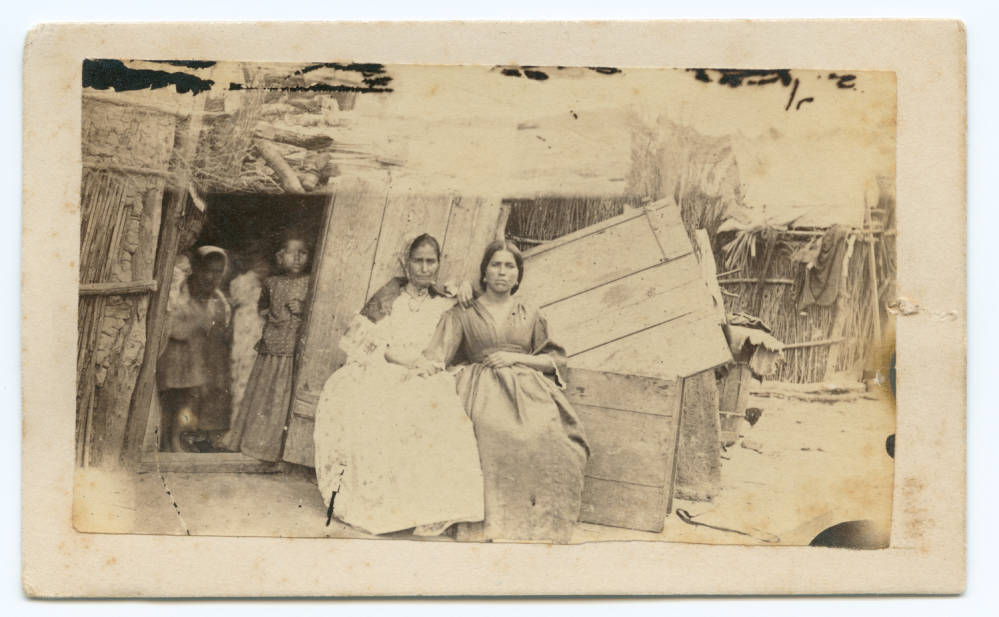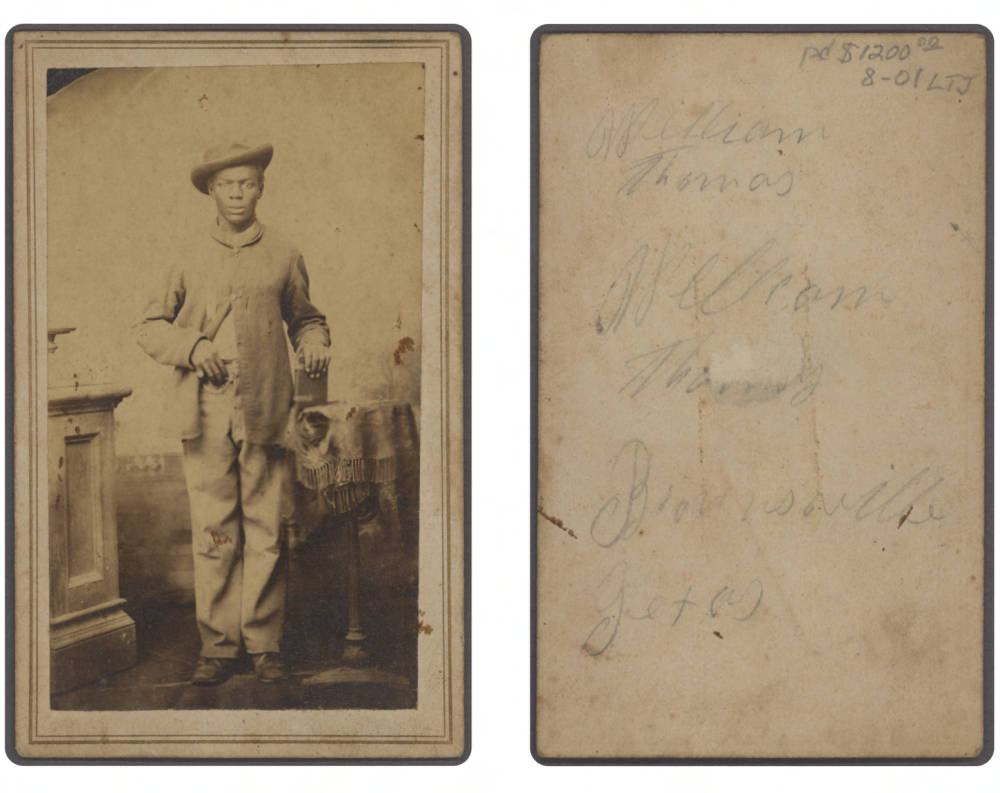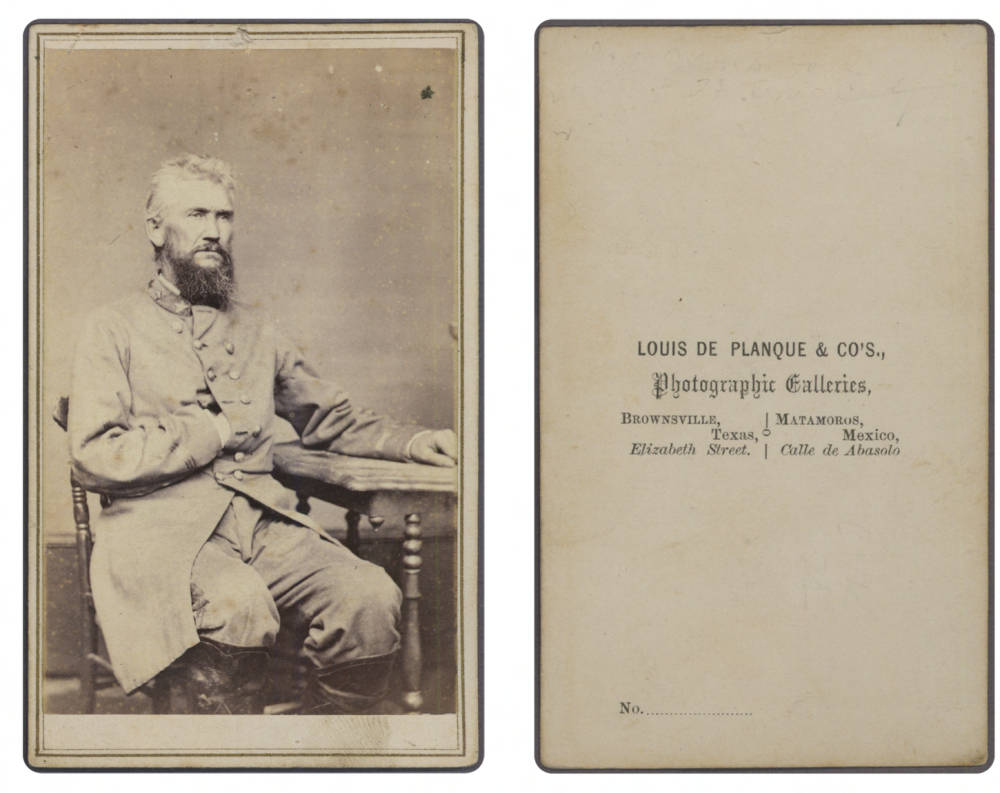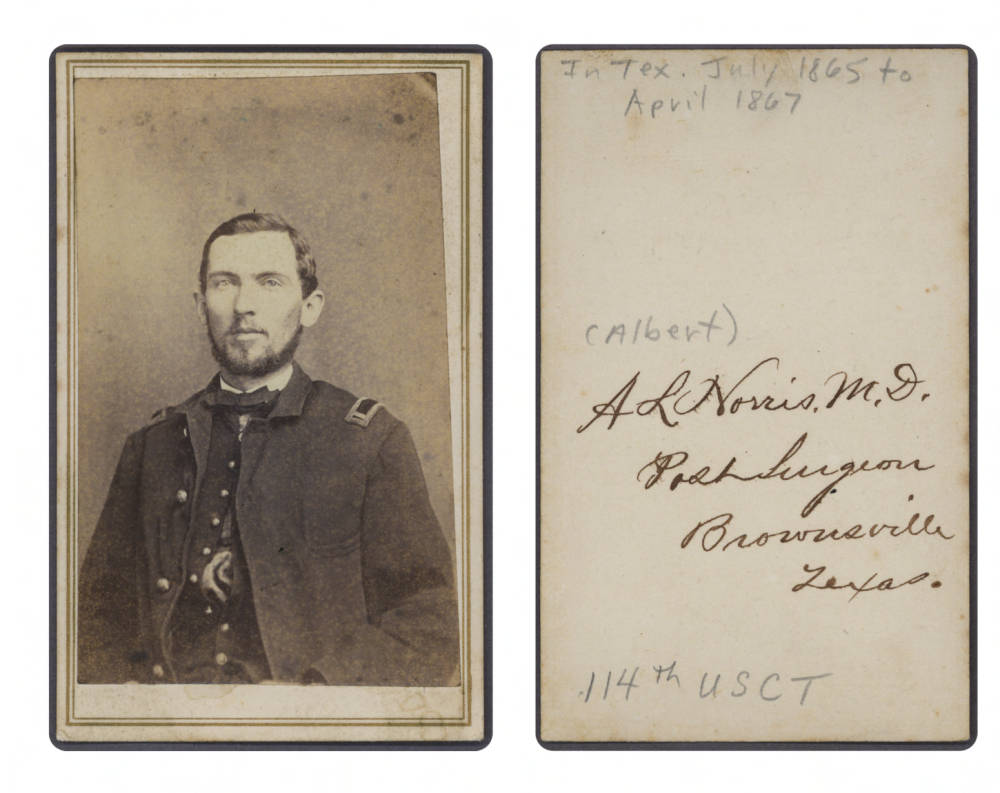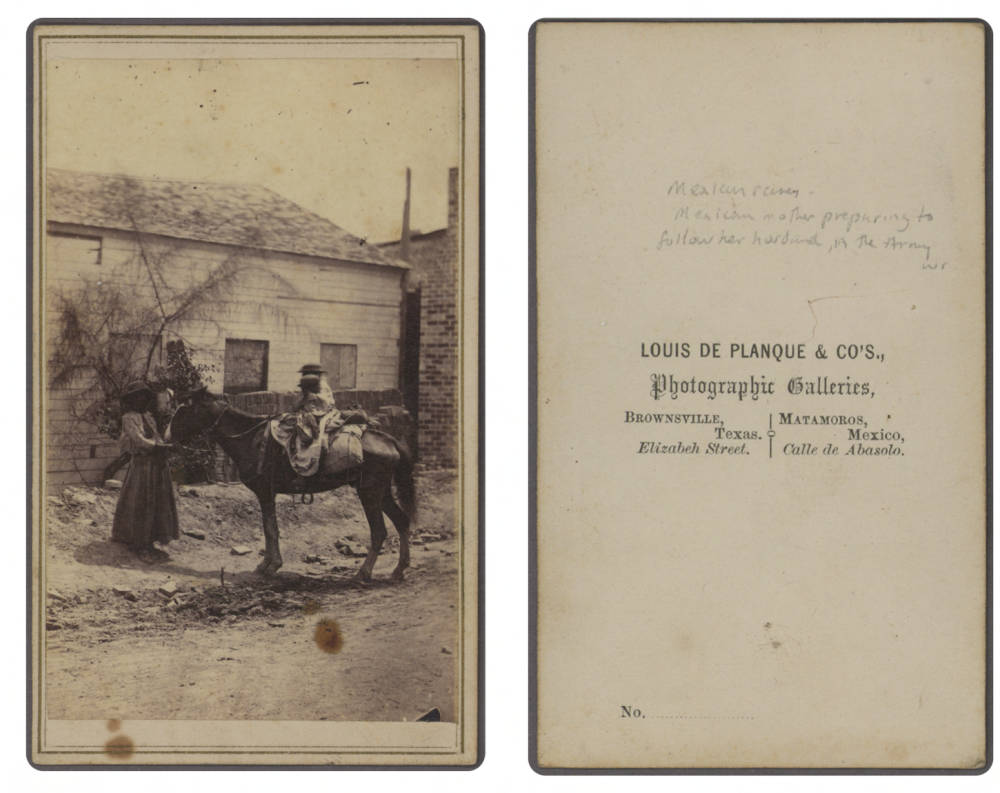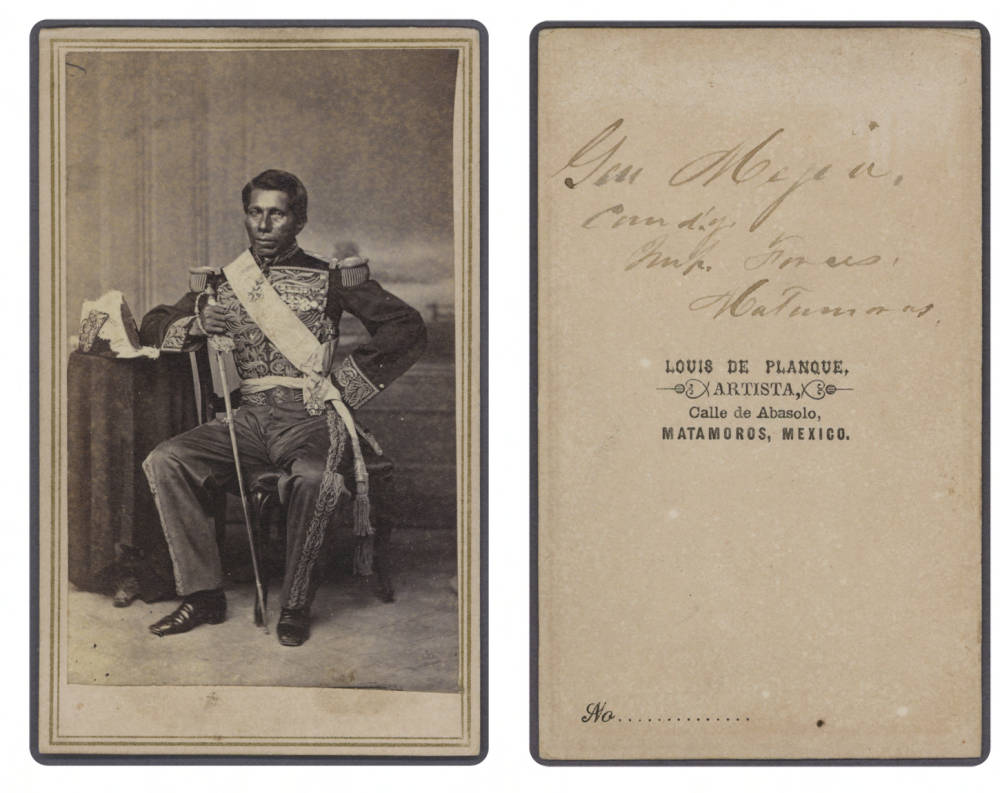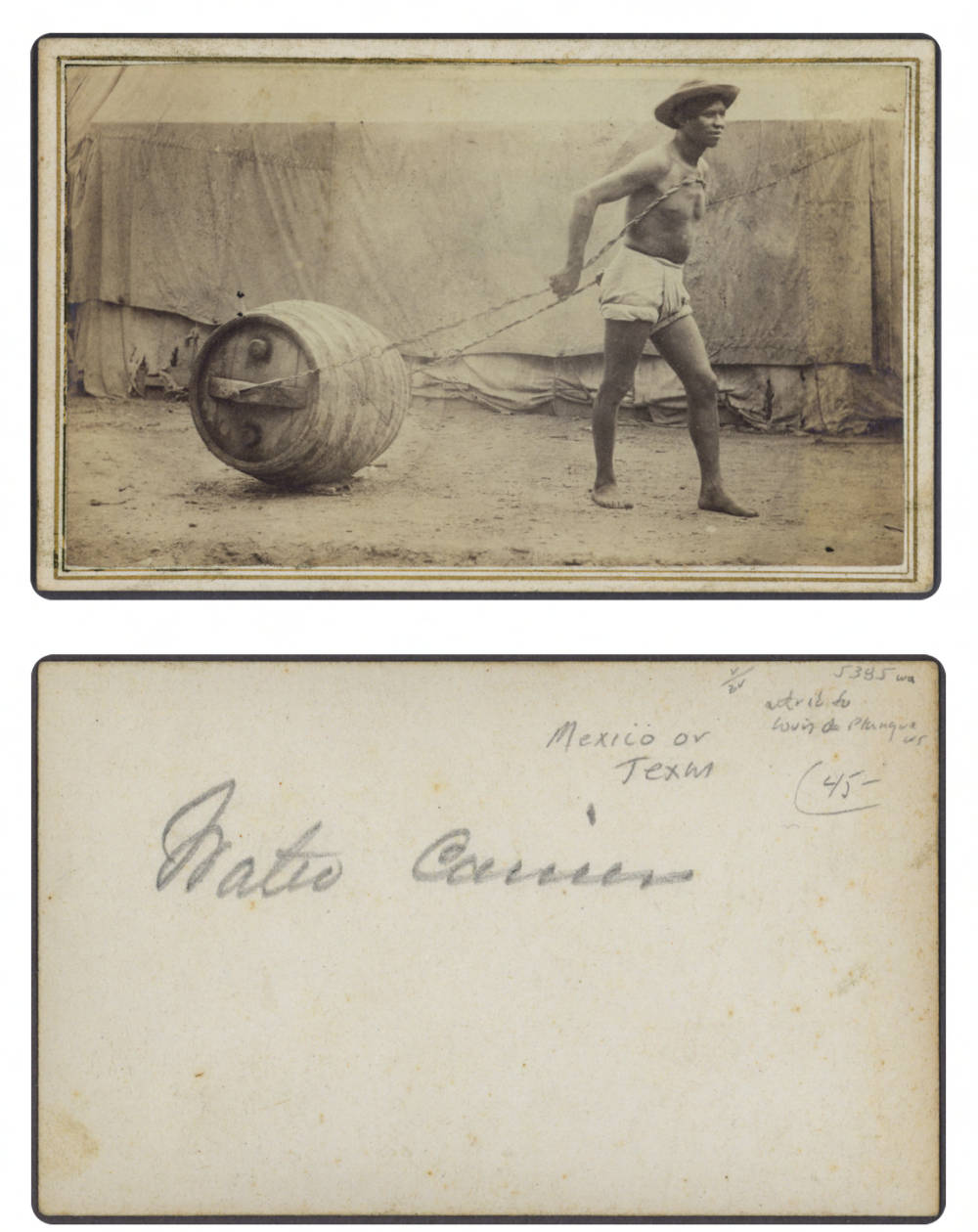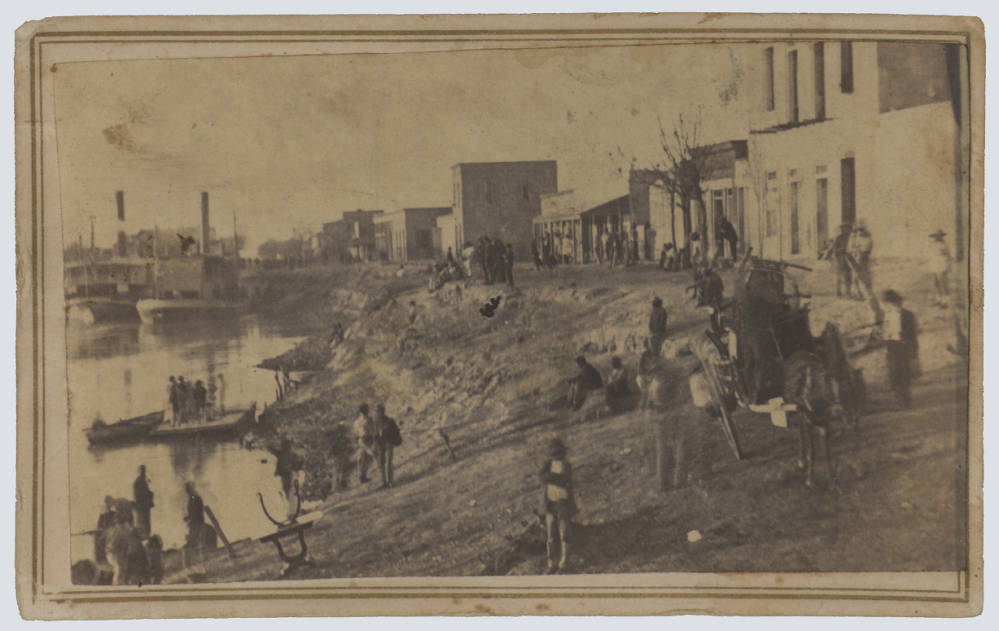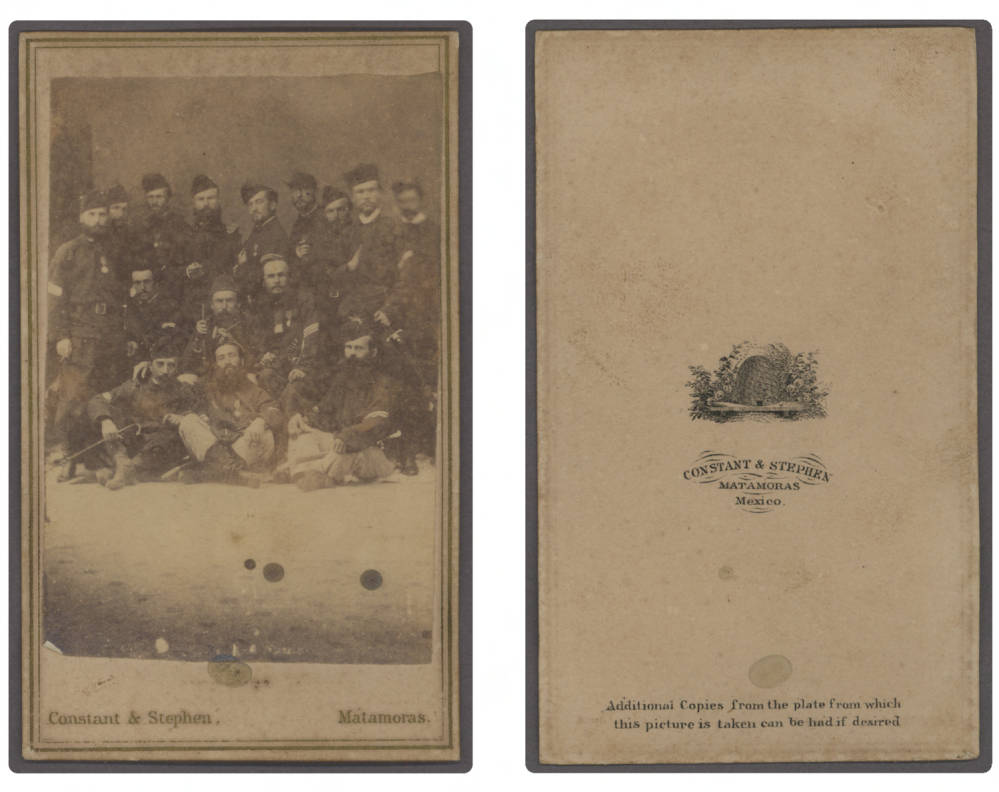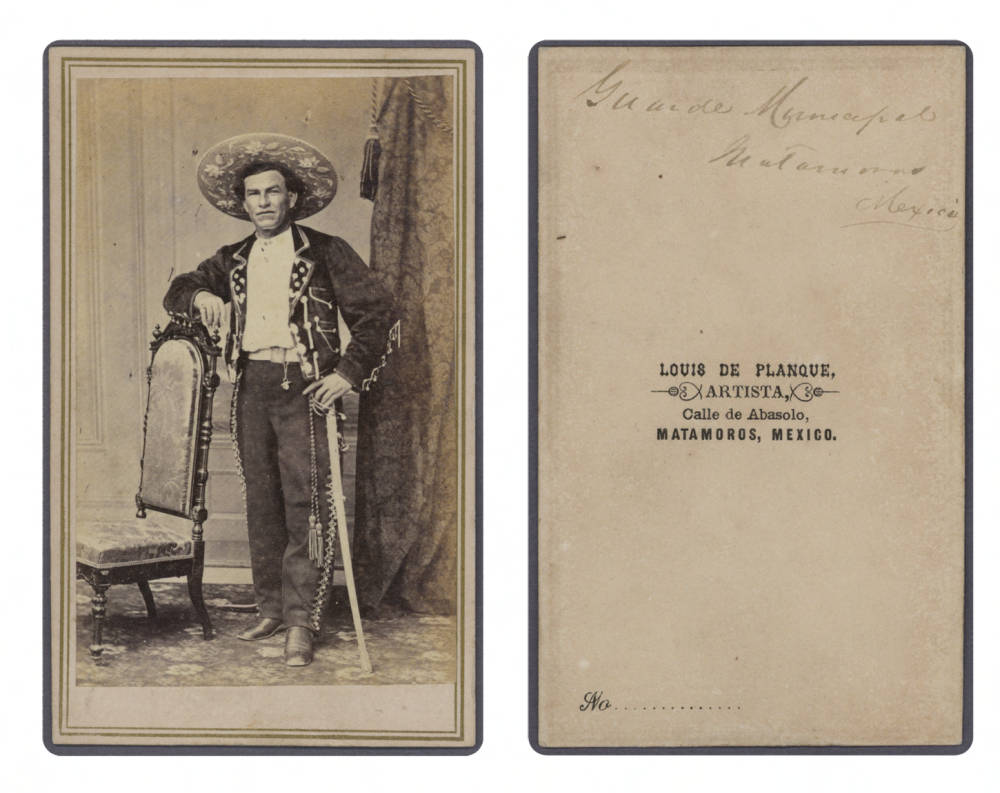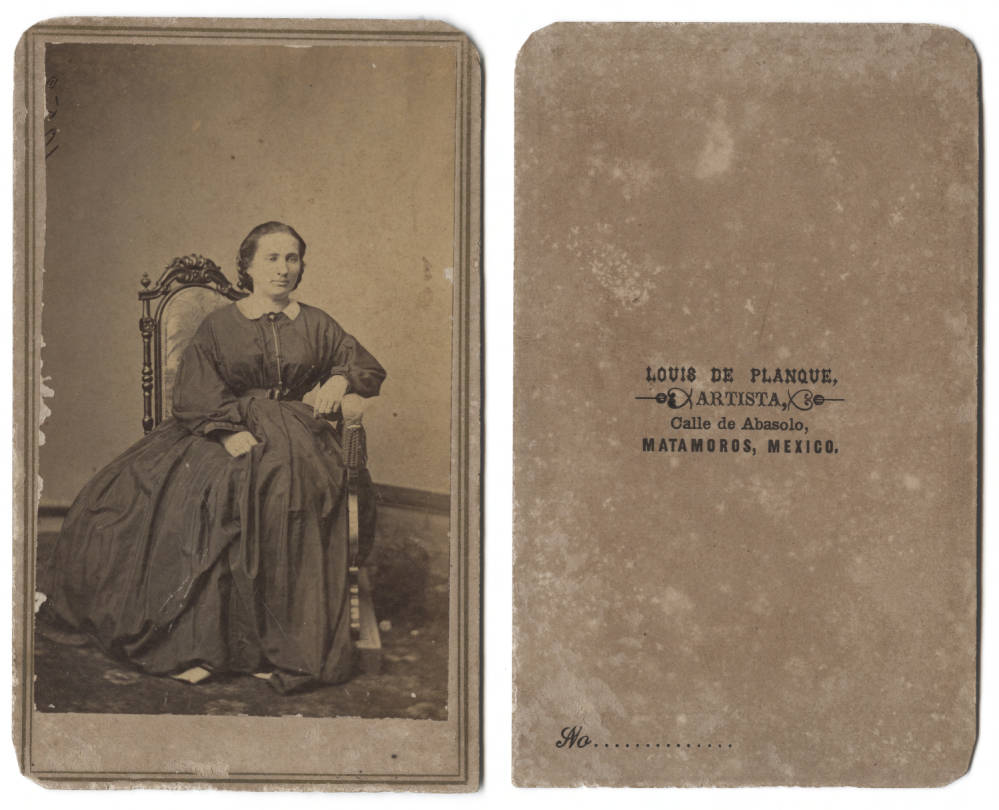29 Photographs of Brownsville and Matamoros, 1864-1867
These photographs are from Brownsville and Matamoros and date from 1864 to 1867. The primary photographer in these images, Louis de Planque, was a German-French photographer who arrived in the region during the French intervention in Mexico. He photographed people from both sides of the U.S.-Mexico border and nearly all sides of the conflicts that marked the region from 1864 to 1867. A few of these photographs have unknown authors but appear to be from La Planque’s studio.
Most photos have notes on the reserve that are included in the scan. Each image links to its original location in the DeGolyer Library.
Women in front of a house. The house is a jacal, a common structure for in this region with indigenous origins. It appears that the family is using shipping crates to reinforce a wall.
Pvt. William Thomas, was a soldier in the “Ninth U.S. Colored Troops,” one of the Union Army formations with African American enlisted soldiers through the Civil War era. Pvt. Thomas served at Fort Brown from July 1865 to October 1866.
John Salmon “Rip” Ford was a Texas Ranger and Confederate Army Colonel. Before the Civil War he led Texas Rangers in their campaign against Juan Cortina and his supporters.
A.L. Norris, MD. Norris was a U.S. Army surgeon assigned to an African American unit stationed at Fort Brown after the Civil War. This is his 1867 portrait in Brownsville.
This photograph has the note, “Mexican mother preparing to follow her husband in the Army.” This is possibly an early example of the role of soldaderas in Mexican military history. It is not clear which “army” is involved, as there were many overlapping conflicts in the region.
Tomás Mejia, a veteran of the conflict between Mexico and the United States was an indigenous Mexican officer who became a commander in the French-backed imperial forces of Maximilian. Mejia fought against the republican forces of the indigenous Mexican President Benito Juárez.
This man is only identified as a “water carrier.” His clothing and labor indicate he was most likely in debt bondage (peonaje), which many indigenous Mexicans experienced from the colonial period until the Mexican Revolution of the 1910s.
Levee Street in Brownsville near the Rio Grande. Cross-border commerce, including extensive smuggling, made Brownsville and Matamoros major trade centers during the Civil War.
Austrian Soldiers, known as Jaeger, serving Emperor Maximilian in Matamoros, c. 1865. The “Civil War” in this region was a multinational conflict involving many rival armies.
A “municipal guard” in Matamoros. His clothing exemplifies the charro clothing that became popular in nineteenth-century Mexico.
Many of the photographs are ordinary studio portraits, such as this photograph of a woman in Matamoros around 1865-1867.
All photos are at the DeGolyer Library of Southern Methodist University. For details, see the https://www.smu.edu/libraries/degolyer/using/images web page. For more information, contact degolyer@smu.edu.

